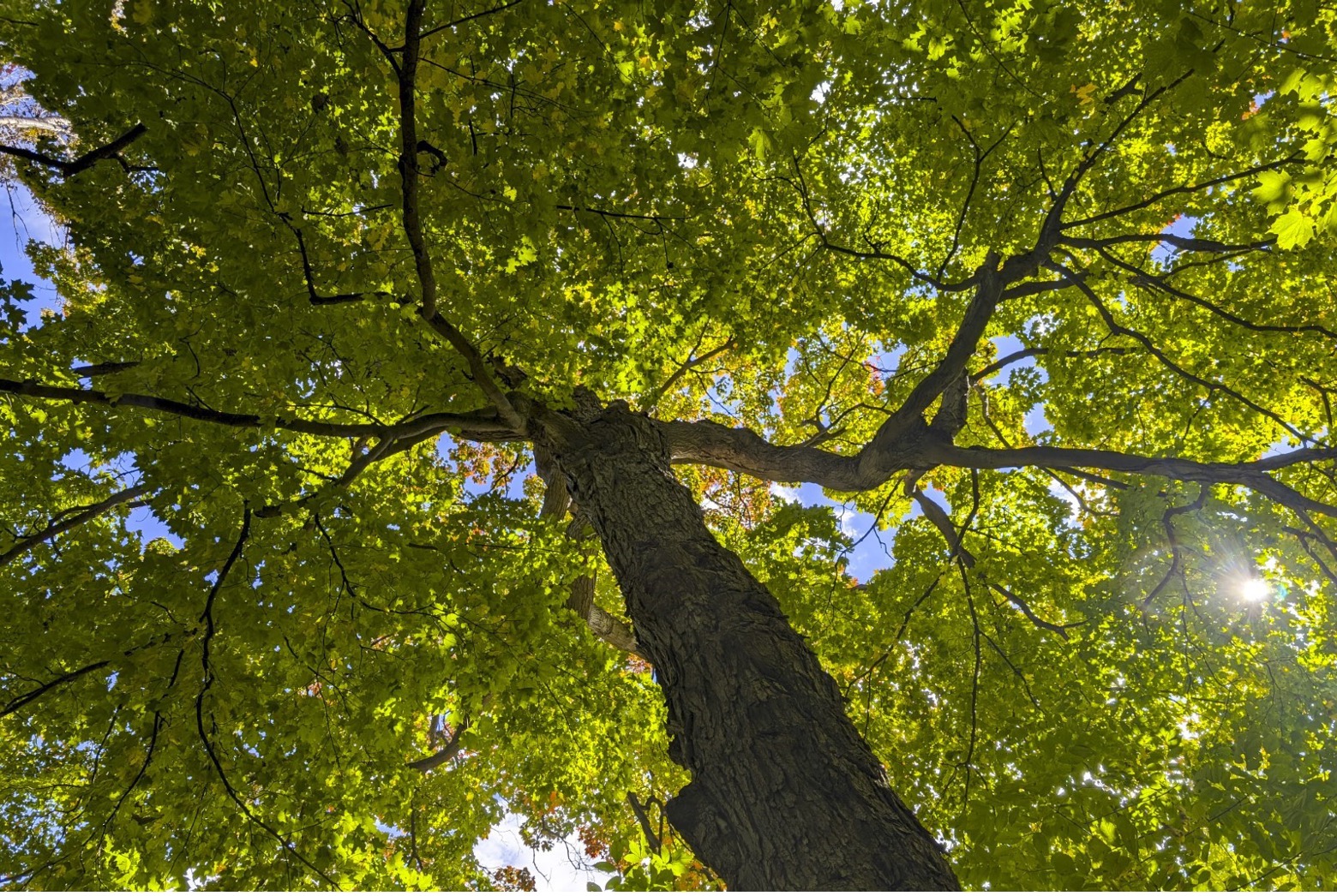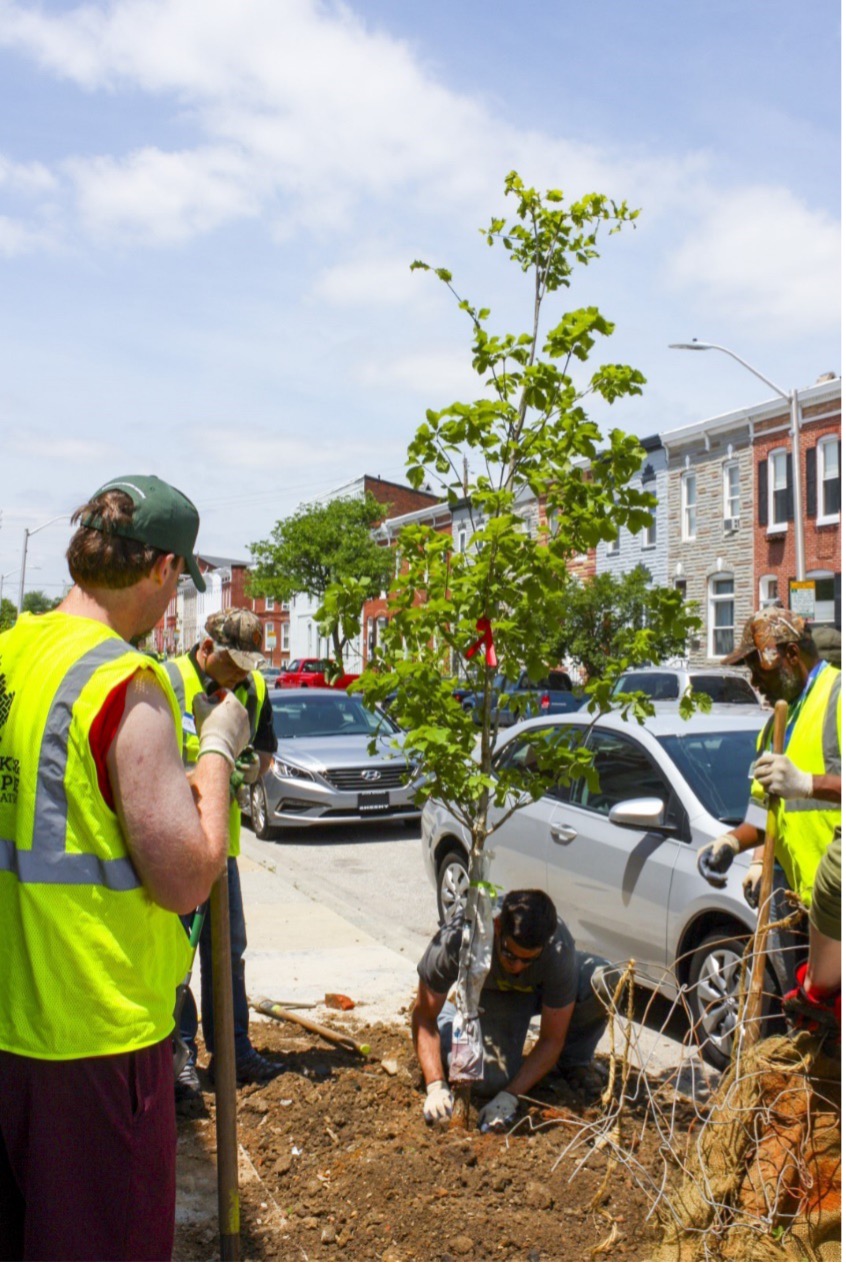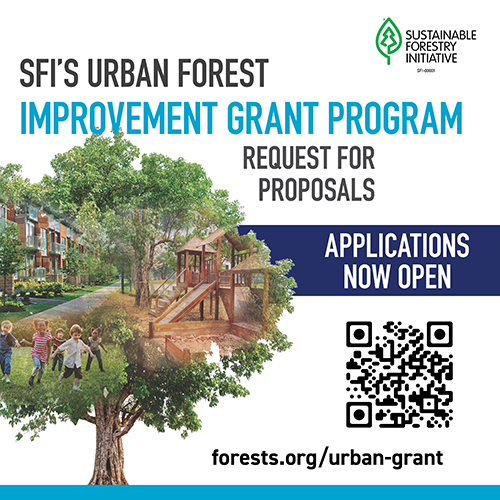Historic investments are driving large-scale tree plantings across Canada and the United States. As urban canopies grow, the question remains: how do we ensure long-term tree care and forest management, especially in a changing climate?

The Promise of Urban Tree Planting
Planting a tree can evoke accomplishment and a sense of promise for the future. Gathering to improve the landscape brings communities together, and at the end of the day, there’s a tangible result. The act of planting a tree symbolizes an accessible way to invest in environmental health, but it’s the long-term stewardship of these trees that will unlock the full positive impact that urban and community forests can have for us and the planet.
The lasting effects of tree planting initiatives depend on the care that we commit to growing the trees we plant.
Urban forests reduce the environmental and social pressures of city life, including the urban heat island effect, and can subsequently face more pressures than their rural counterparts. As trees increase in size, they can make outdoor urban areas more comfortable for people and more hospitable to countless species. Strategically placed and sustainably managed trees provide a suite of environmental, social, and economic benefits known as ecosystem services. In the United States, this represents an estimated $73 billion of annual benefits in atmospheric carbon dioxide captured and sequestered, air pollution filtered, and stormwater runoff diverted.
When large and healthy trees are located where people live, work, and play, they also influence positive outcomes for human health and well-being. Beyond these measurable benefits, urban forests also contribute subtle yet essential qualities that enhance our daily experience. They create shaded areas that naturally cool streets and public spaces, reduce heat exposure, and promote mental relaxation, making cities not only more livable but also more resilient to the impacts of climate change.
Successful planting projects take into consideration the needs and expectations of people, the unique social-environmental context of a community, the requirements of trees to survive, the demands on the land, the relationships between trees and the ecosystem, and the anticipated environmental conditions of the future. A viable tree planting project is a thoughtful exercise, but it should be accompanied by post-planting sustainability consideration—in equal measure of attention, education, and resources.
Governments recognize the long list of benefits that come from urban forests and the importance of tree planting as an actionable way to work toward managing greenhouse gas emissions while fostering liveable communities. Initiatives such as the U.S. Department of Agriculture Forest Service’s historic funding of urban and community forestry, the 2 Billion Trees program, and Growing Canada’s Community Canopies initiative are intended to support the growing movement of mass urban tree plantings across North America. By increasing canopy cover, these programs support enhanced community well-being, mitigated urban heat islands, and strengthened biodiversity in our cities. It’s important we take the next step and ensure that trees planted (and their accompanying benefits) can be enjoyed by future generations.
When organized intentionally to adapt to a changing environment, planting large quantities of trees is an impactful long-term climate action. As cities get hotter, dryer, denser, and increasingly complex, we need to plan, monitor, and care for the urban forest.

Planting trees in urban areas is a humane and powerful endeavor.
Tending to the Urban Forest Means Taking Care of our Communities
Recent research has found that effective tree planting begins with insight from the community to understand the needs and goals of those who interact with the urban forest. Addressing apprehensions about tree planting can also lead to constructive compromise and greater compatibility between trees and their planting sites. Community engagement also ensures trees are planted equitably, where they are needed and will be utilized the most.
For urban forests to deliver on the promise of maximized benefits, this means acknowledging the required follow-up care and appropriate interventions to minimize risk and support success. It is essential in the first three to five years following planting that trees have access to enough water and nutrients. During this critical period, we need to be attentive, ensuring support stakes do not linger past the prescribed period and damage the tree. Young trees may also require structural pruning to help adapt the tree to the urban landscape and reduce the likelihood of conflicts with human activities. Seeing to the health and establishment of young trees on the landscape is a way to care for the community and maximize the investment provided by tree planting.
Urban forestry tends to the pressing issues of the present while anticipating and adapting to the threats of the future.
As trees mature and increase in size, they face challenges such as conflicts with the built environment, harm from pests and diseases, damage from extreme weather, and environmental disturbances like fires. During their life stages, trees require ongoing inspection and guidance from qualified professionals who specialize in the care of trees. Increased urban development and loss of green space, as well as rising annual temperatures, make it more difficult to preserve trees. This also makes our cities more difficult places to live, further demonstrating the need for urban forests. Investing in the long-term management of trees can bring comfort, resilience, and well-being to our cities in the face of change.
Proactive, sustainable urban forest management aims not only to renew the urban forest but also to ensure that trees remain healthy and present on the landscape for generations to come.
Incentive to Improve Management and Long-Term Adaptation
Alongside eleven other U.S. Forest Service Urban and Community Forestry national pass-through partners, SFI is now providing organizations with their own grant opportunity, the SFI Urban Forest Improvement Grant.
Cities, universities and colleges, Indigenous communities and Tribes, and non-profits managing urban or community forests may apply and request up to $75,000 to benchmark their local urban and community forest to the SFI Urban and Community Forest Sustainability Standard. To achieve this, they can complete the review internally or hire a consultant to help. In addition, grant recipients will contract with a, certification body to conduct an assessment of their readiness for a third-party certification audit.
By working towards certification to the SFI Urban and Community Forest Sustainability Standard, you ensure that you’re adopting best practices and foster a community effort towards continuous improvement in sustainability, environmental stewardship, and local engagement. Organizations gain enhanced credibility and public trust by demonstrating their commitment to sustainable urban forest management.
Community engagement is a key focus of the SFI standard, promoting stronger partnerships and successful urban forestry initiatives through better public involvement. The standard also emphasizes optimizing the environmental and economic benefits of urban forests, such as improving air and water quality, reducing urban heat islands, and minimizing organizations’ and communities’ carbon footprint.
Data-driven decision-making is another benefit of benchmarking to the SFI standard, as it involves the analysis of data to track progress and measure the impact of urban forestry initiatives. Moreover, aligning with the SFI standard supports broader global sustainability goals, such as the United Nations Sustainable Development Goals (SDGs), positioning organizations as leaders in sustainable urban forestry.
Learn more about the funding available and Request for Proposal (RFP) criteria for successful grant consideration ahead of the January 30, 2025, deadline (additional applications may be taken after the deadline based on funding availability).

